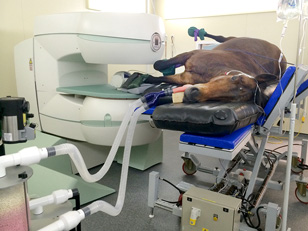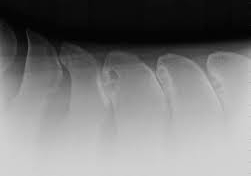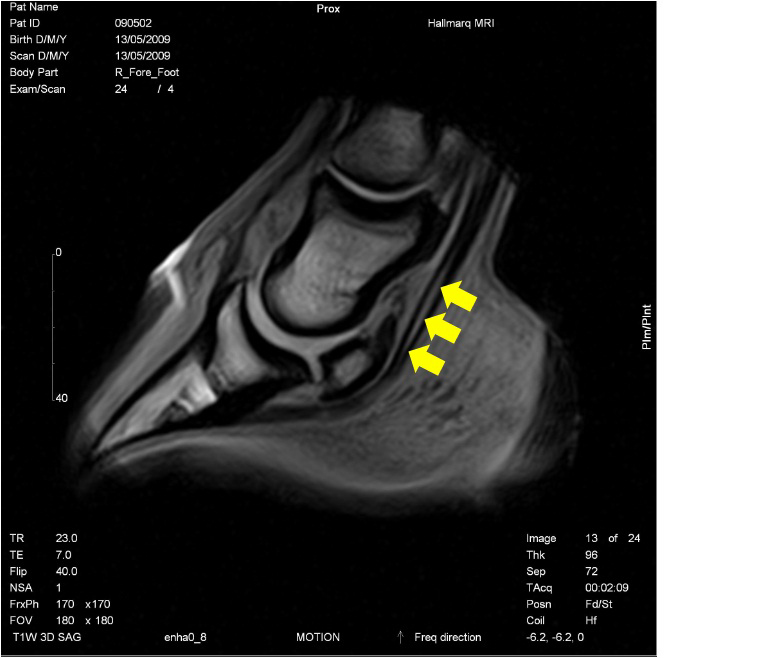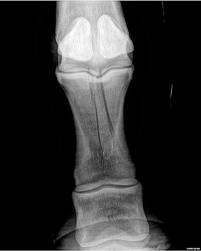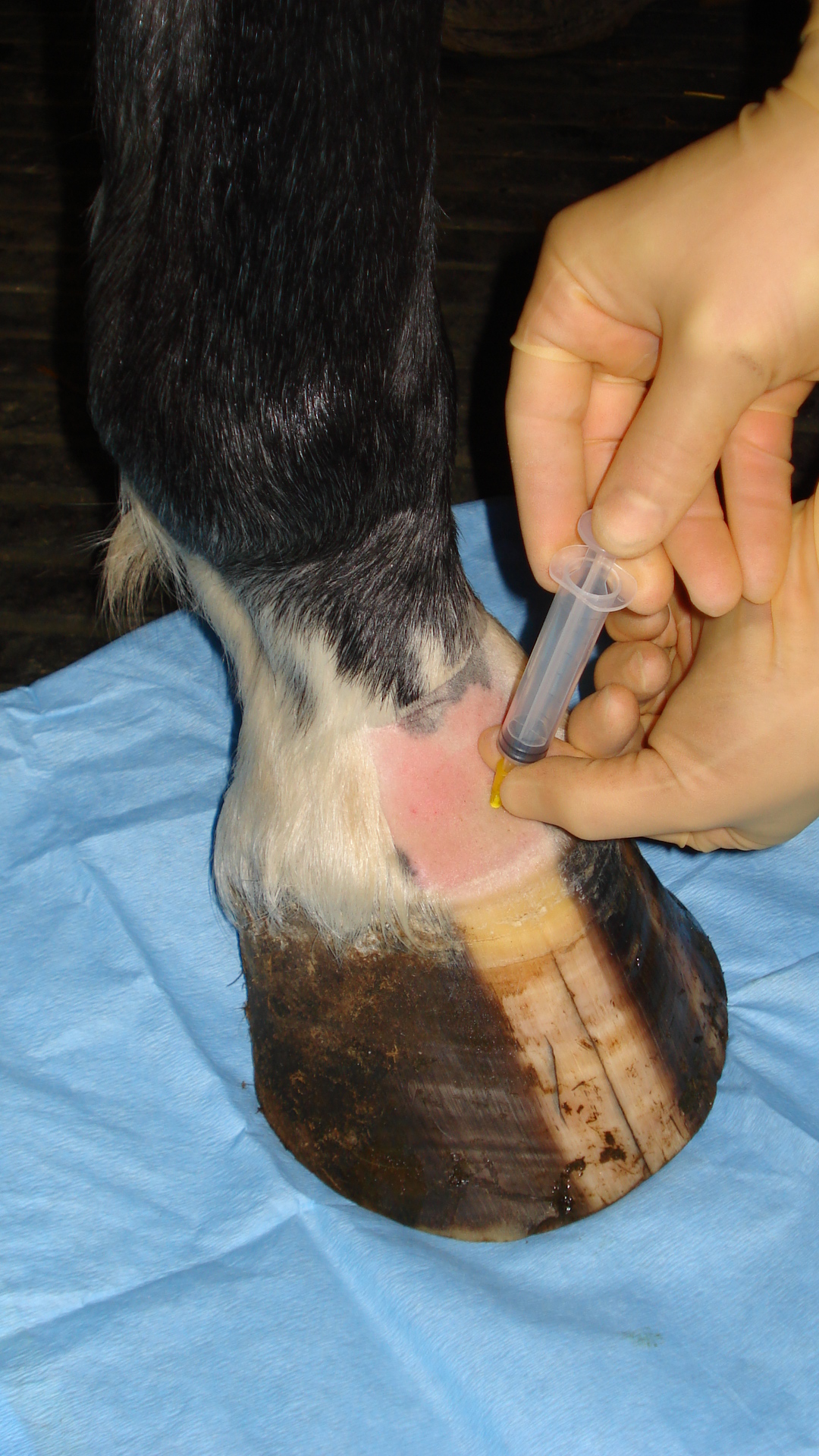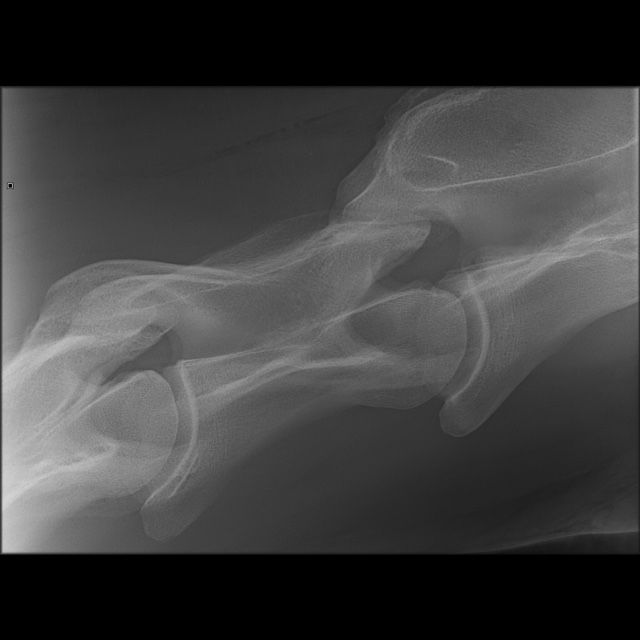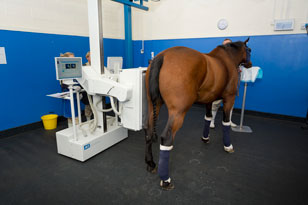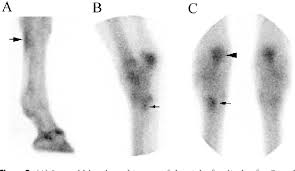A large percentage of our caseload in equine practice involves investigation and diagnosis of lameness. Many cynics argue that all horses are lame to a degree, and unfortunately, they have a point! This is why it is good practice as an owner, to periodically, have your horse assessed for lameness. This usually entails watching the horse walk and trot in straight lines and then on a firm, non-slip circle. It may also be necessary to carry out a ridden assessment for the more subtle problems or for sacro-iliac issues.
Once a problem has been identified, we then have to localize where the pain is coming from by performing nerve blocks; this is the process of injecting local anaesthetic around the nerves that innervate different parts of the limb. We normally start at the foot and work up the limb until the lameness is resolved. We can also desensitize specific joints, or synovial structures, such as tendon sheaths, by injecting local anesthetic directly into the cavity. This has to be done under strict asepsis as it is imperative that we don't introduce any bacteria into a joint. That is why we prefer to do these examinations in the Clinic so we can ensure a clean environment and we have trained nurses to scrub-up the injection sites.
When we are 100% sure that we have accurately located the site or sites of pain, we then carryout diagnostic imaging using ultrasound, radiography, MRI or scintigraphy. Thoroughly pinpointing the injury is vital to formulating an effective treatment plan.
to book a lameness assessment please call the clinic on 01386 853884

